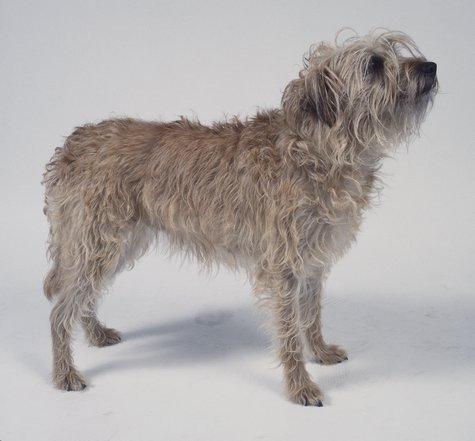Type the name of the breed you're looking for below
[wpdreams_ajaxsearchlite] Don't see the breed your're looking for? Click here and let us know!
Breed Characteristics
1 paw - breed exhibits the least amount of this characteristic
5 paws - breed exhibits most amount of this characteristic
Dutch Smoushond
| Other Names | Dutch Ratter, Hollandse Smoushond, Smoushond |
| Country of Origin | Netherlands |
| Weight | 20 - 22 lbs. (9 - 10 kg) |
| Height (at withers) | 14 - 17 in. (35 - 42 cm) |
| Coat | Its waterproof coat is rough and shaggy. |
| Colour | Any shade of yellow colour. |
| Litter Size | 4 - 6 puppies |
| Life Span | 12 - 15 years |
| Origin & History | The Hollandse Smoushond Club (Smoushondenclub) was formed in 1905 to document and register the small stable dog as a purebred breed, as it was in danger of dying out. Its origins may have been with the ancestor of the Schnauzer breed, as an incorrect yellow colour. The name refers to its shaggy fur and face, as Jewish men (called Smouzen in the 1800s) had beards and long hair. They were called "Dutch" to prevent confusion with the similar Belgian griffons. During World War II, the breed nearly disappeared. In 1973, several breeders began to reconstruct the breed with the few remaining dogs, most of whom had been crossbred with other breeds. Much of the reconstruction was accomplished with the use of Border Terrier crosses. There is illustrated reference to the breed in Dutch artist Rien Poortvliet's popular 1996 book, "Dogs." |
| Personality | This easy care, obedient house-dog is a friendly and charming companion. The Smoushond tends to be quiet with those he does not know, but is loving with those that he does know. This skillful, intelligent dog has considerable adaptability. It is alert with a sense of humor. Dependent, sober and sensitive, it makes a good watchdog. Do not allow this dog to become yappy. They need to be corrected if their barking becomes obsessive. They get along well with children and happily accept the family cat. Most Dutch Smoushond get along well with other dogs. The Dutch Smoushond is eager to please, which means training it is not hard. It is important, though, to ensure that you are consistent toward it because some can try to take over if they get an idea that their handler is rather easy-going. Proper human to canine communication is essential. |
Care Requirements
| Health | There are no known breed-specific health concerns. |
| Grooming | This is basically an easy care breed. The coat should have a shaggy unkempt look. Depending upon the quality of the coat, the Dutch Smoushond generally requires the hair to be plucked by hand about twice a year, leaving the hair on the head alone as much as possible. You can take your dog to a professional groomer to have this done or learn to do it yourself. Between these grooming sessions, remove any excess hair from inside the ears and between the pads of the feet. |
| Exercise | This untiring breed needs daily, long walks where the dog is made to heel beside or behind the human holding the lead, as instinct tells a dog the leader leads the way, and that leader needs to be the human. They love to go swimming. Enrolling it in agility skills or ball playing courses would be a rewarding experience for both you and your dog. |
| Other Considerations | The Dutch Smoushond will do okay in an apartment as long as it gets adequate exercise. The Smoushond should live indoors. It prefers cooler climates. |



